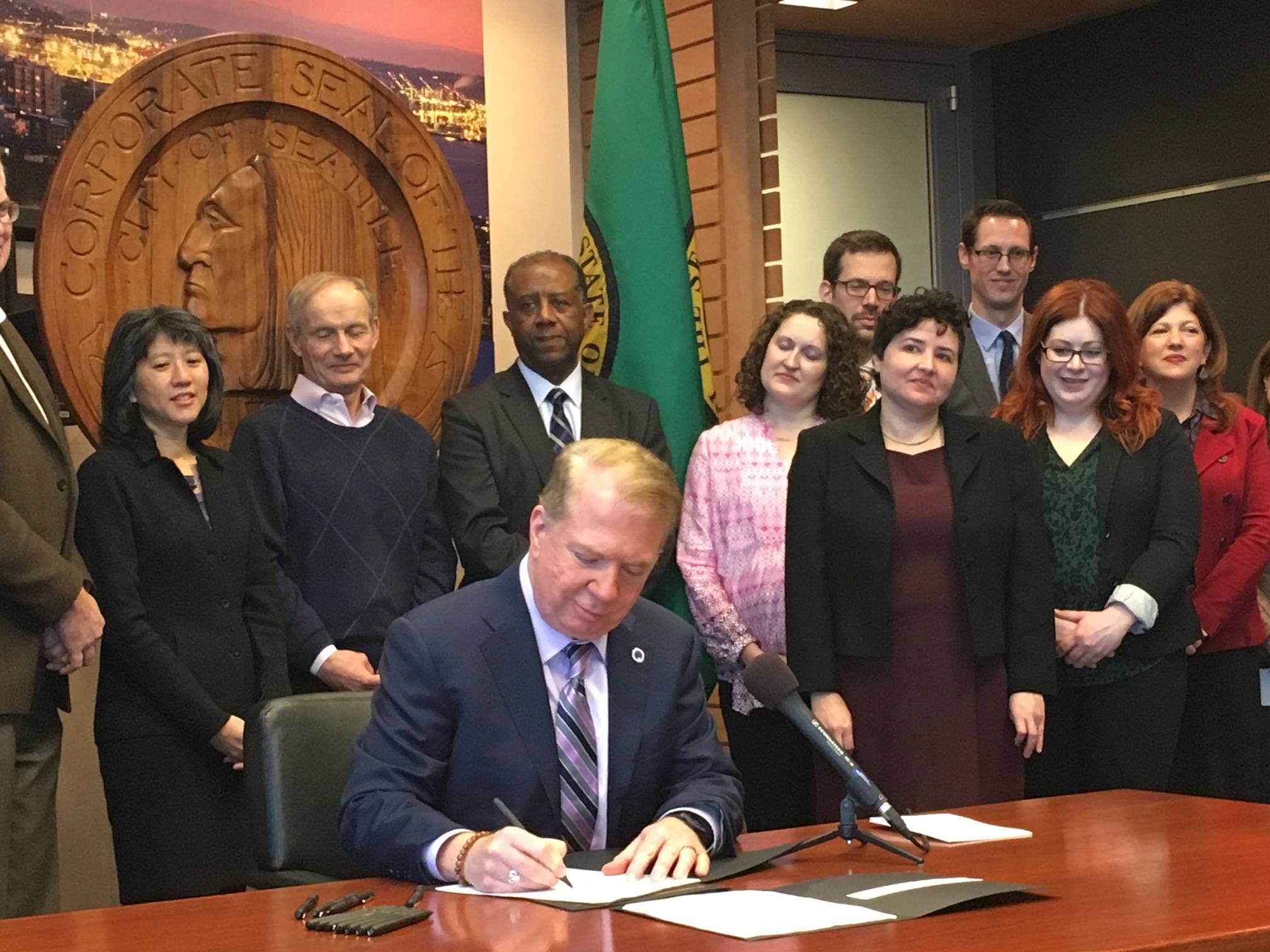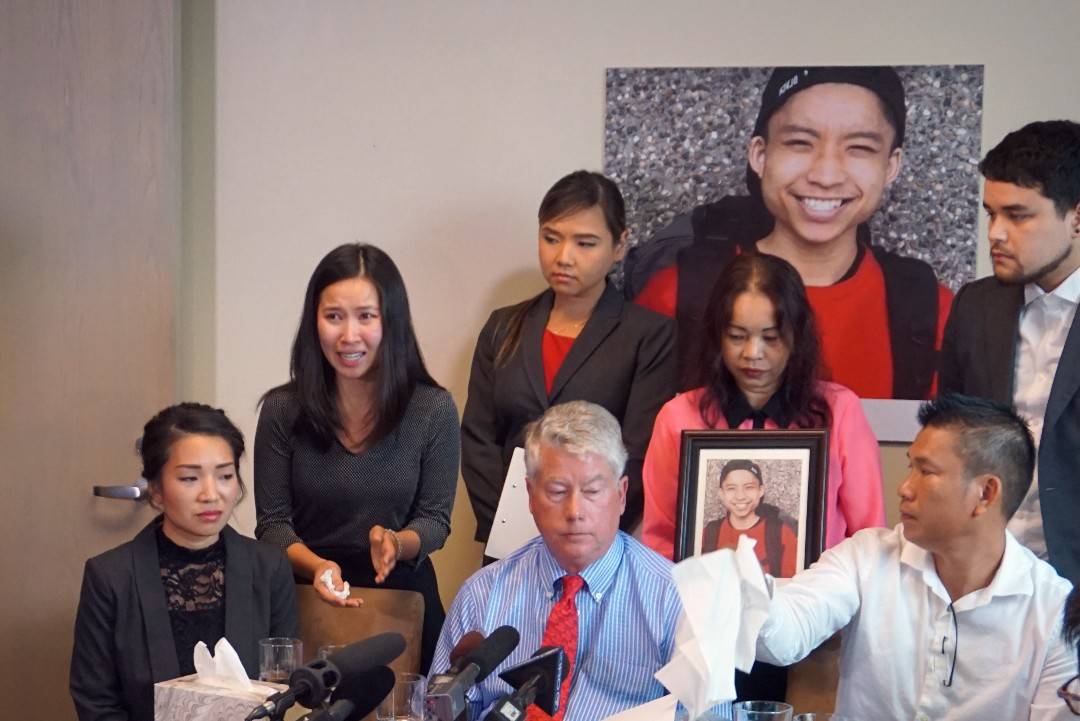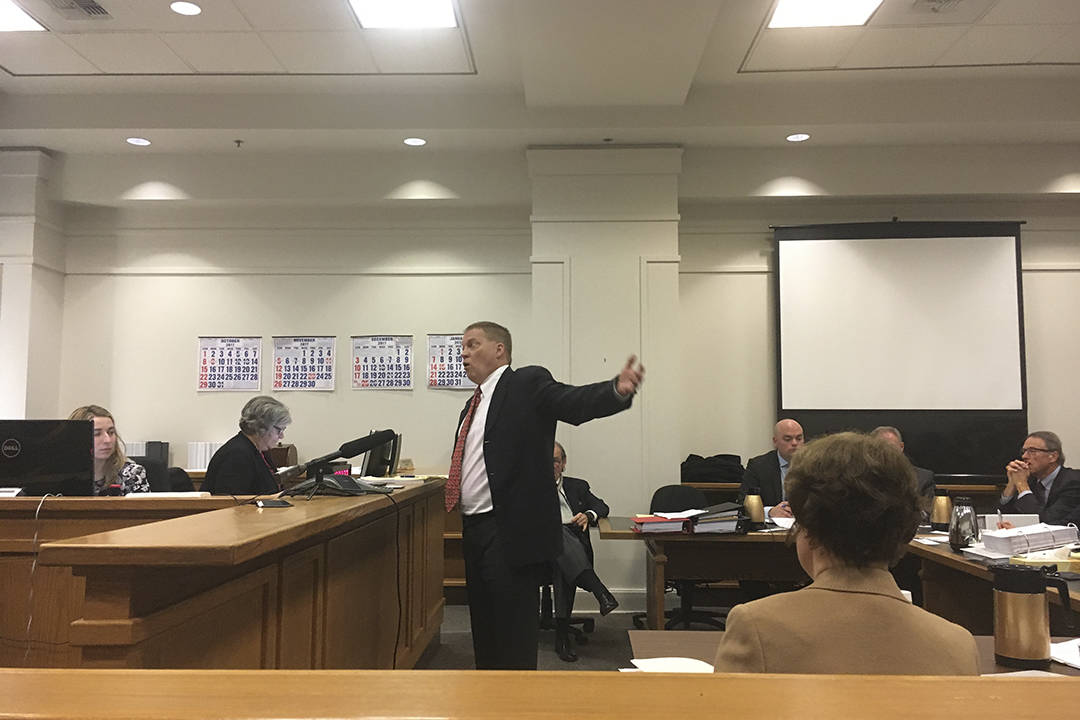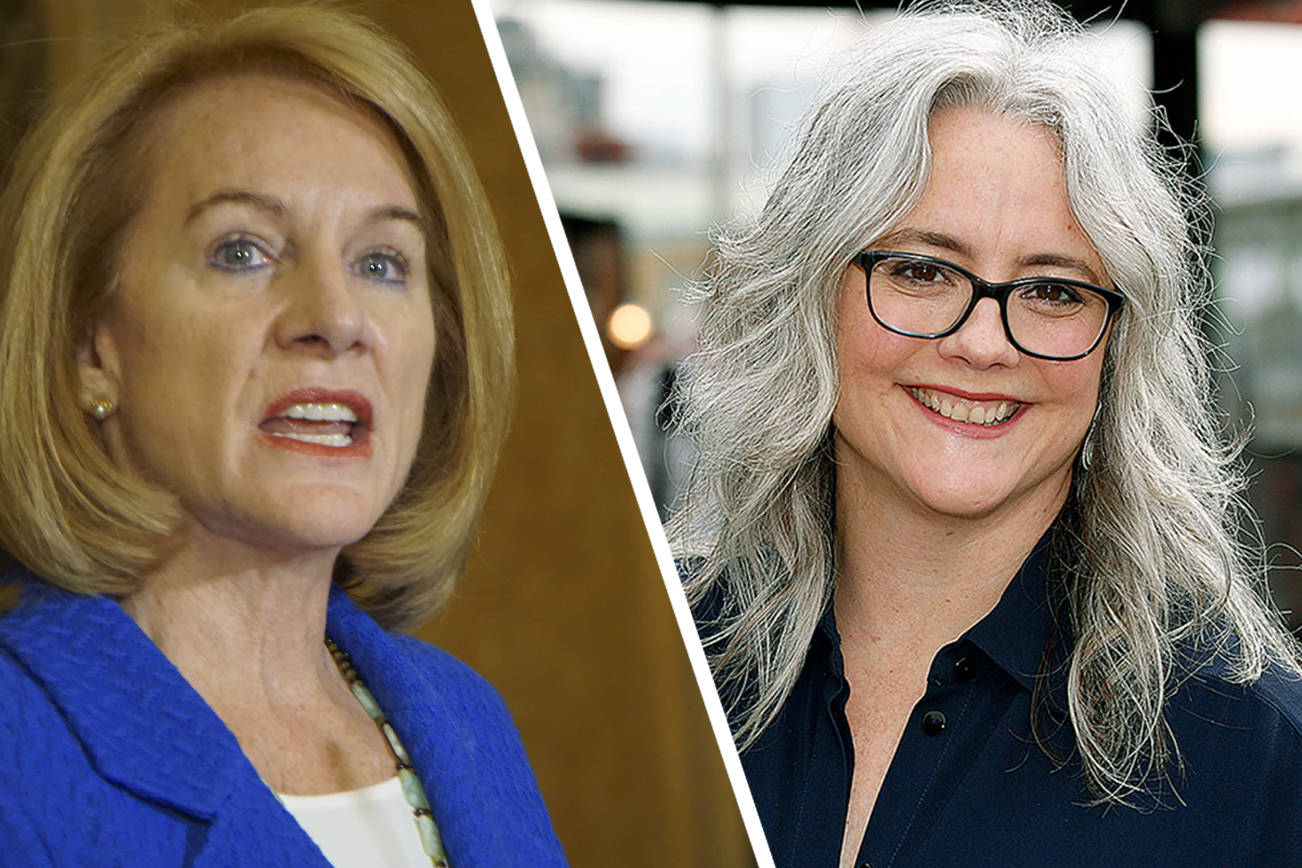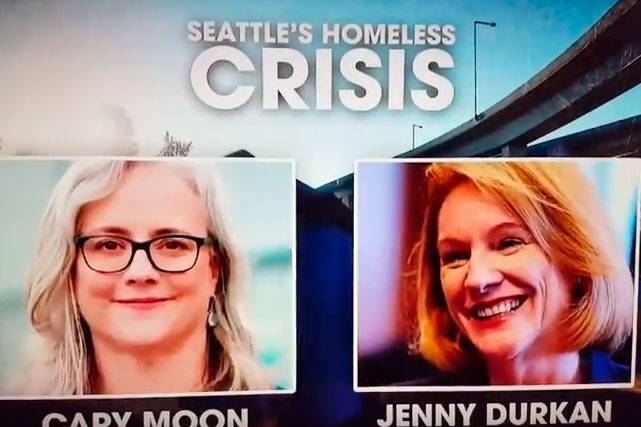At a sparsely attended ceremony Thursday, Mayor Ed Murray signed legislation allowing for much taller buildings in the University District and requiring developers of those buildings to contribute significantly more to affordable housing efforts.
The small crowd, like the unanimous city council vote that approved it last week, belies the fact that the legislation is a big, controversial, deal. The subject of fiery community forums and dueling economic studies, the upzone will be the test case for Mayor Ed Murray’s so-called “grand bargain” between developers and affordable housing advocates, hammered out by the Housing Affordability and Livability Agenda task force. Depending on how it works, it could either become the model for other upzones across the city, or a cautionary tale in how not to do affordable housing in Seattle.
With the U District upzone now the law of the land, here are a few ways things could play out, according to those watching the action.
1. It Works!!!
Obviously the preferred outcome of the people who put it into law, the ideal scenario goes like this: With new zoning laws that allow much taller buildings in the U District, developers recognize an opportunity to make big bucks with high-rises packed with $2,000-(or whatever the going rate is these days)-a-month units. Seattle’s housing shortage is eased, which tempers the rental market by providing the hordes of people moving to Seattle a place to live. To boot, all this humanity will be plopped right next to the U District light trail station, scheduled be opened in 2021, which will make the downtown job center a brisk subway ride away.
Meanwhile, for those people unable to pay for market-rate apartments, perhaps because they don’t have a fancy downtown job to take the light rail to, the new program called Mandatory Affordable Housing will require the developers building those high rises to either set aside some of their units for affordable rates, or pay into the Seattle Office of Housing’s fund for affordable housing. Either way, lots more rent-controlled units get built in Seattle thanks to the new upzone in Seattle.
“For the first time ever in Seattle history, we are requiring developers to contribute to affordability in every project,” Murray said of the MHA program at the signing ceremony Thursday, saying the U District upzone could produce 600-900 low-income housing units.
2. It Destroys a Bunch of Affordable Housing, and MHA Doesn’t Make Up For It
This was the battle cry of the anti-upzone movement. People like John Fox of the Seattle Displacement Coalition worry the new zoning will cause developers to buy older apartment buildings that are already providing lower-than-average rents and tear them down.
Fox, by counting mailboxes and breaker boxes, calculates there are about 1,600 housing units in the area affected by the upzone (a number that has fluctuated a little bit as some blocks get taken out of the upzone and others get added in). He says the MHA program will not be able to keep up with that huge loss of below-market housing stock. The council has agreed to look at a “one-for-one” policy that guarantees affordable units destroyed by the upzone are replaced by other affordable units, but for now it’s all on MHA.
Despite rallying vociferous opposition to the upzone, the anti-upzone movement was dealt a blow by the 9-0 vote in favor of the upzone; the council wasn’t even willing to slightly increase the amount of money developers were required to pay into affordable housing (though this wasn’t unanimous).
“All in all we all went away extremely disappointing,” Fox says, adding that other neighborhoods will soon be subjected to the same density efforts. “Coming the next round of district elections, we’ve got to do more to elect candidates that are more responsive to our communities on these issues.”
3. Developers Don’t Build Anything Because MHA Is Too Expensive
If the best-case scenario is that developers both create a ton of market-rate housing thanks to the upzone while also creating a ton of affordable housing because of MHA, the worst case scenario is that Seattle gets neither. And it’s a scenario that Dan Bertolet at Sightline says his research finds likely.
The thinktank’s founder Alan Durning sat on the HALA committee, and Bertolet says Sightline in general is not against MHA. But he notes that as originally conceived, MHA would have required that 6 percent of units created by developers were affordable; that inflated to 9 percent when Murray released the legislation for the U District.
“Our take is that on the near term, it’s going to take a while for the rents to justify building high rises (in the U District),” he says. “By adding an additional cost through MHA, you’re just stretching that delay longer. You’re holding off on that housing that the city really, really needs.”
Bertolet says it’s been “heartbreaking” to argue against the MHA program as it exists in the legislation signed by Murray, not to mention politically impossible (after all, who wants to be seen as going easy on developers?) But he says his research bears it out.
4. Developers Get the Upzone, and MHA Dies In Court
This is a nightmare scenario, and one that probably won’t go down. But for those interested in speculative horror, we wrote about it here.
dperson@seattleweekly.com
